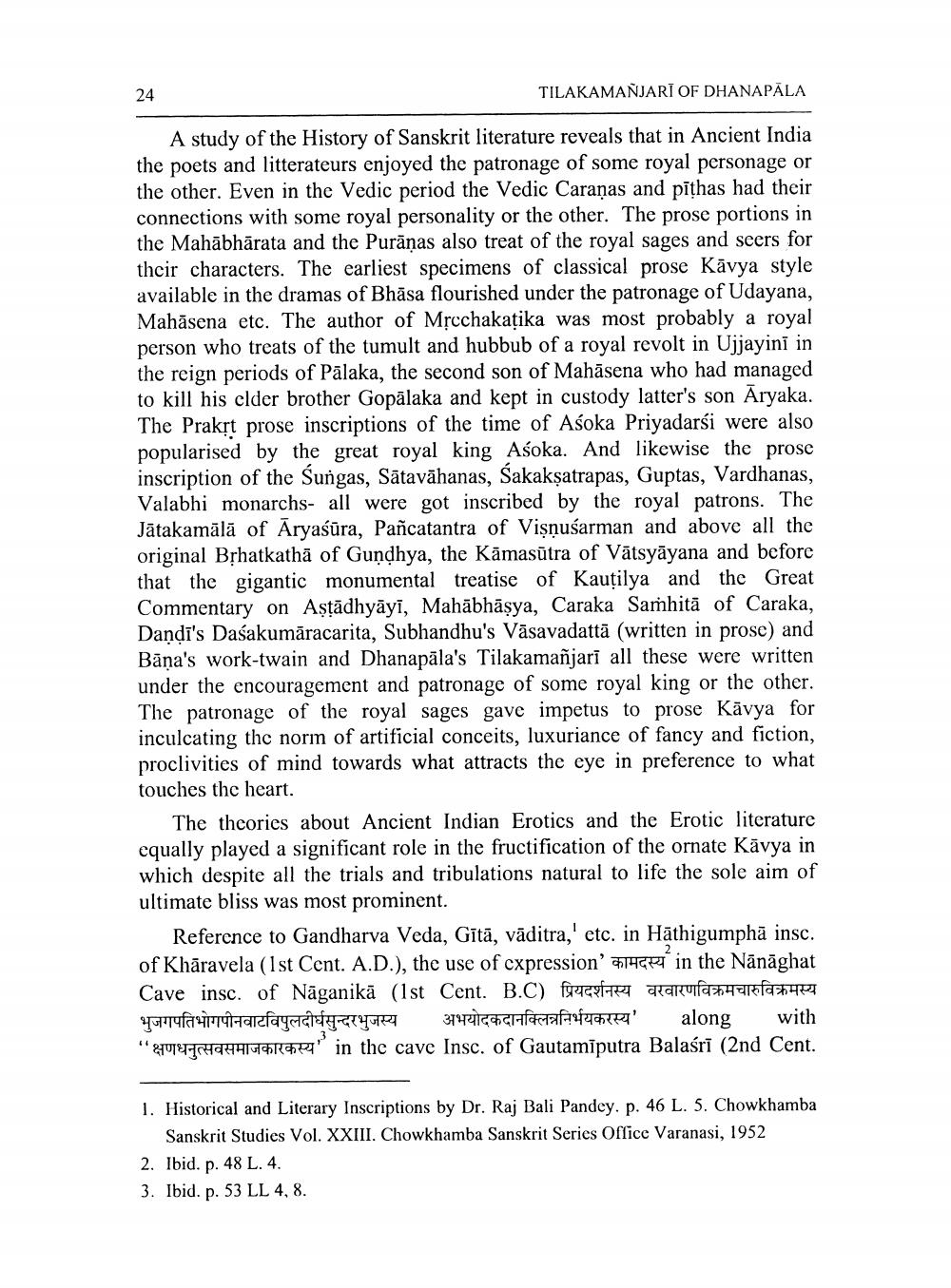________________
TILAKAMANJARĪ OF DHANAPALA
A study of the History of Sanskrit literature reveals that in Ancient India the poets and litterateurs enjoyed the patronage of some royal personage or the other. Even in the Vedic period the Vedic Caraņas and pīķhas had their connections with some royal personality or the other. The prose portions in the Mahābhārata and the Purānas also treat of the royal sages and seers for their characters. The earliest specimens of classical prose Kāvya style available in the dramas of Bhāsa flourished under the patronage of Udayana, Mahāsena etc. The author of Mrcchakatika was most probably a royal person who treats of the tumult and hubbub of a royal revolt in Ujjayini in the reign periods of Pālaka, the second son of Mahāsena who had managed to kill his elder brother Gopālaka and kept in custody latter's son Aryaka. The Prakrt prose inscriptions of the time of Asoka Priyadarsi were also popularised by the great royal king Asoka. And likewise the prose inscription of the Sungas, Sātavāhanas, sakakșatrapas, Guptas, Vardhanas, Valabhi monarchs- all were got inscribed by the royal patrons. The Jātakamālā of Aryaśūra, Pañcatantra of Vişnuśarman and above all the original Brhatkathā of Gundhya, the Kāmasūtra of Vātsyāyana and before that the gigantic monumental treatise of Kautilya and the Great Commentary on Astādhyāyī, Mahābhāsya, Caraka Samhitā of Caraka, Dandi's Dasakumāracarita, Subhandhu's Vāsavadattā (written in prose) and Bāna's work-twain and Dhanapāla's Tilakamañjarī all these were written under the encouragement and patronage of some royal king or the other. The patronage of the royal sages gave impetus to prose Kāvya for inculcating the norm of artificial conceits, luxuriance of fancy and fiction, proclivities of mind towards what attracts the eye in preference to what touches the heart.
The theories about Ancient Indian Erotics and the Erotic literature equally played a significant role in the fructification of the ornate Kävya in which despite all the trials and tribulations natural to life the sole aim of ultimate bliss was most prominent.
Reference to Gandharva Veda, Gītā, vāditra,' etc. in Hāthigumphā insc of Khāravela (1st Cent. A.D.), the use of cxpression' 51462 in the Nānāghat Cave insc. of Nāganikā (1st Cent. B.C) forceffe qarufaarfare
fairytarefayatta yup 374216CH faufa ' along with " Hay ciep in the cave Insc. of Gautamīputra Balaśrī (2nd Cent.
1. Historical and Literary Inscriptions by Dr. Raj Bali Pandey. p. 46 L. 5. Chowkhamba
Sanskrit Studies Vol. XXIII. Chowkhamba Sanskrit Series Office Varanasi, 1952 2. Ibid. p. 48 L. 4. 3. Ibid. p. 53 LL 4, 8.




